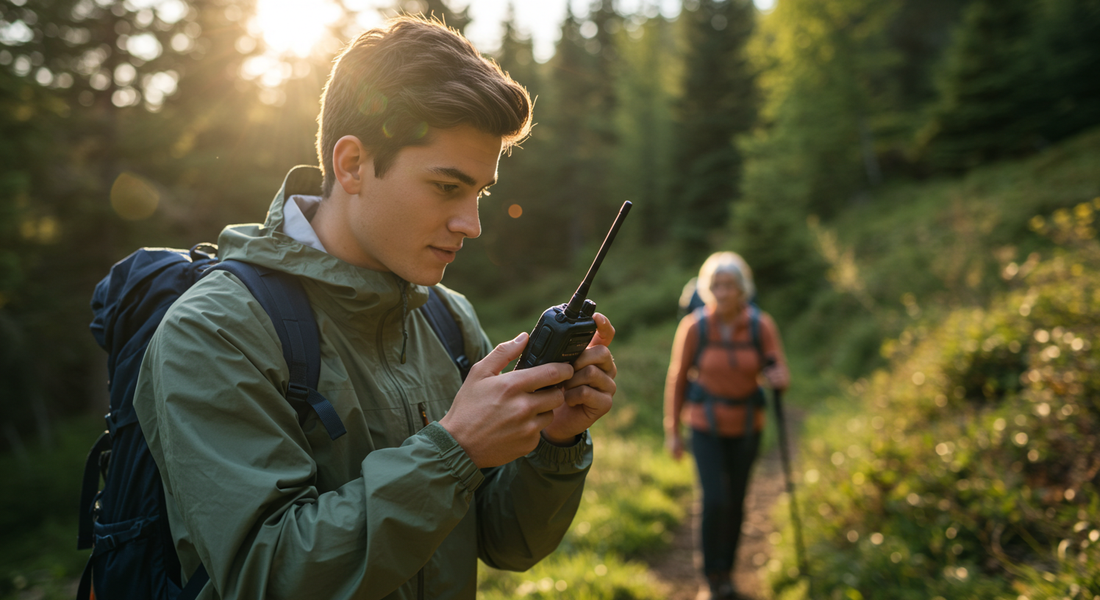
When the Cell Towers Go Down: A Beginner's Guide to Off-Grid Communication
Share

In our modern world, we are constantly connected. A quick text, a video call, a social media update—it all happens instantly, assuming the intricate network of cell towers, satellites, and undersea cables is working perfectly. But natural disasters, power outages, or other widespread emergencies can quickly reveal the fragility of this system. When the cell towers go down, our primary means of communication disappears. This is why having a backup, off grid communication plan is not just for hardcore preppers; it's a crucial part of any family's emergency preparedness.
Option 1: Simple & Accessible (FRS/GMRS Radios)
For most people, the simplest entry into emergency communication options is a set of handheld two-way radios. You've likely seen these used by hikers and families at amusement parks.
-
Understanding the Difference:
-
FRS (Family Radio Service): These are the low-power, "bubble pack" radios you can buy at any big-box store. They do not require a license to operate.
-
GMRS (General Mobile Radio Service): These radios are more powerful, offering significantly better range. While you can buy them easily, operating them legally on GMRS channels requires a simple, test-free license from the FCC for you and your immediate family.
-
-
Pros and Cons: The main advantage of GMRS vs FRS is power and range. FRS is perfect for short-range communication (less than a mile in real-world conditions), is cheap, and easy to use right out of the box. GMRS can reach several miles, especially with a better antenna or a repeater, making it a much more robust option for neighborhood-level communication. The main con for both is that their range is highly dependent on line-of-sight; hills, buildings, and dense forests will significantly reduce their effectiveness.
Option 2: Powerful & Versatile (HAM Radio)
Amateur radio, or HAM radio, is the gold standard for reliable, long-distance off-grid communication. It's a community of licensed operators who can communicate across town, across the country, or even around the world without relying on any public infrastructure.
-
What is HAM radio? It's a network of hobbyists who use a wide range of radio frequencies. In an emergency, when all else fails, the HAM radio network is often the only functioning communication system, with volunteers providing a vital link for emergency services.
-
Getting a License: Unlike FRS/GMRS, using a HAM radio requires passing a test to get a license. However, the entry-level HAM radio for beginners license, the Technician class, is very accessible. The test covers basic electronics, safety rules, and operating procedures. With a Technician license and a simple handheld or mobile radio, you can communicate over dozens of miles, and even hundreds of miles using local repeaters.
Option 3: Global & Guaranteed (Satellite Messengers)
If you need the ability to send a message from anywhere on the planet, regardless of local infrastructure, satellite technology is your only guaranteed option.
-
How They Work: Devices like the Garmin inReach or ZOLEO are not phones, but satellite messengers. They connect directly to satellite constellations in orbit, allowing you to send and receive text messages, share your GPS location, and trigger an SOS alert to a global emergency response center from anywhere with a clear view of the sky.
-
Pros and Cons: The obvious pro is global coverage. If you can see the sky, you can communicate. They are a lifeline for backcountry adventurers and a powerful tool in a disaster. The main con is the cost. The devices themselves are expensive, and they all require a monthly subscription fee to maintain service.
Choosing the Right System for Your Family
There is no one-size-fits-all answer. The best system depends on your needs:
-
For neighborhood communication: A set of GMRS radios is an excellent, cost-effective choice.
-
For regional communication and a serious commitment: Getting a HAM radio license opens up a world of reliable communication.
-
For guaranteed global messaging: A satellite messenger is the ultimate tool, provided you can afford the subscription.
Conclusion: Building a Redundant Strategy
The smartest approach is a redundant one. A family might own GMRS radios for local chats, while one member gets a HAM license for more serious communication, and they keep a satellite messenger in their go-bag for true emergencies. By understanding these off grid communication options and choosing the ones that fit your plan, you gain the powerful peace of mind that comes from knowing you can stay connected when it matters most.
